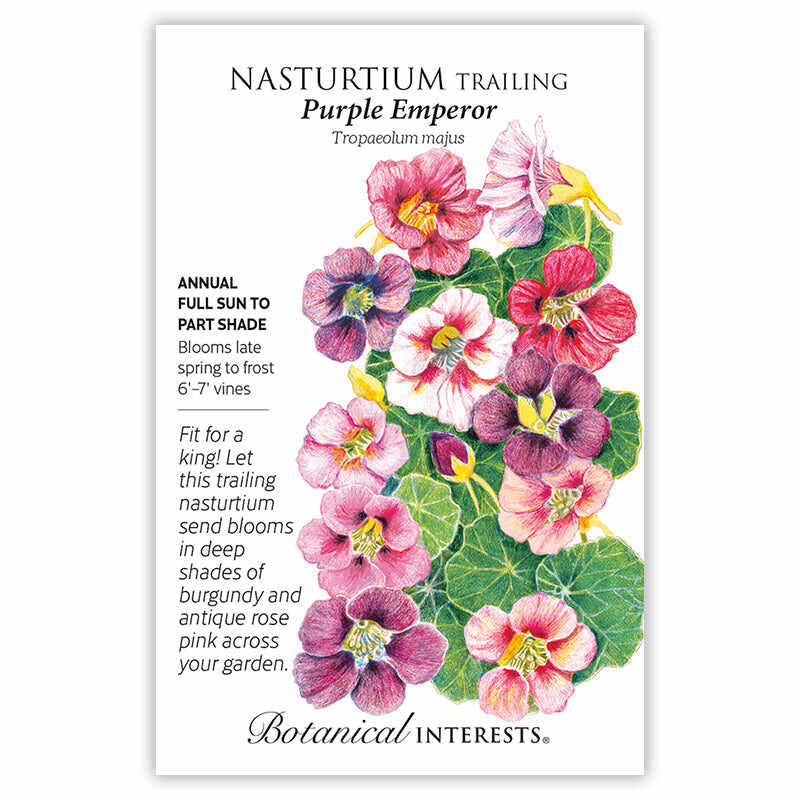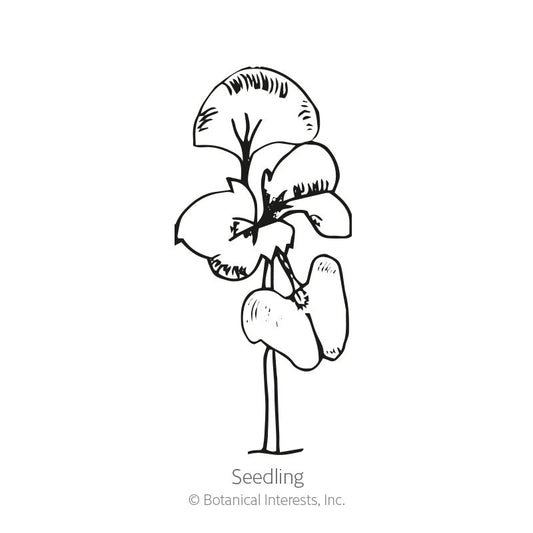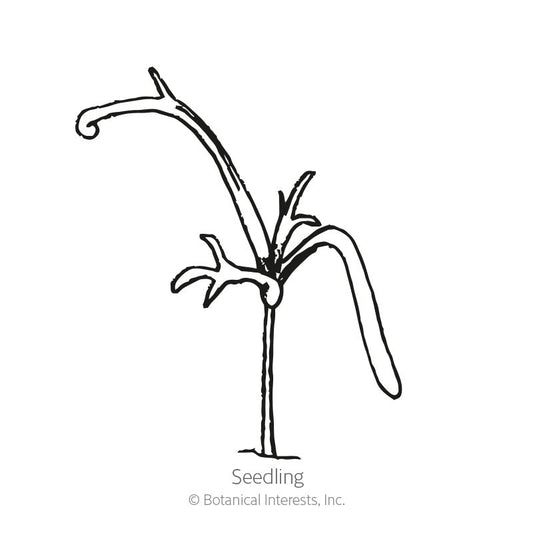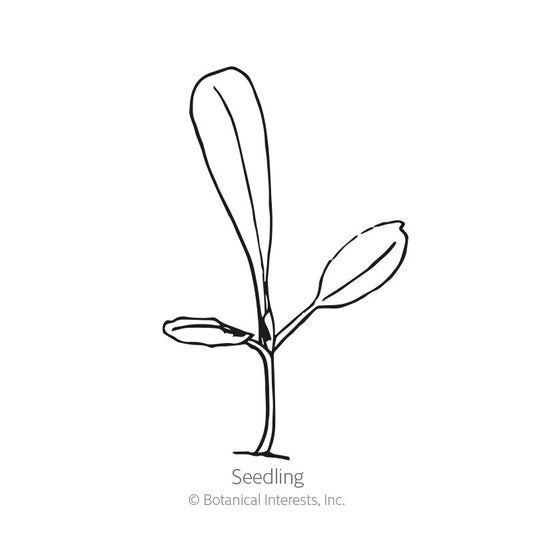


- Variety Info
- Sowing Info
- Growing Info
- Learn More
Variety Info
Family: Tropaeolaceae, Nasturtium family, contains more than 75 species of garden nasturtiums.
Native: South America
Hardiness: Frost-sensitive, tender perennial usually grown as an annual; perennial in USDA zones 10 and warmer.
Exposure: Full sun to part shade
Bloom Period: Late spring to frost
Plant Dimensions: 6'–7' vines
Variety Info: 2" blossoms that bloom burgundy purple and fade to lavender and rose pink.
Attributes: Attracts Hummingbirds, Attracts Pollinators, Drought Tolerant, Deer Resistant, Rabbit Resistant, Good for Containers, Edible Flower

Sowing Info
When to Sow Outside: RECOMMENDED. 1 to 2 weeks after your average last frost date. Mild Climates: Sow in fall for winter bloom. Ideal soil temperature for germination is 55°‒65°F.
When to Start Inside: Not recommended. 2 to 4 weeks before your average last frost date. Roots sensitive to transplant disturbance; sow in biodegradable pots that can be directly planted in the ground.
Days to Emerge: 7 ‒ 14 days
Seed Depth: ½"–1"
Seed Spacing: A group of 3 seeds every 8" – 12"
Thinning: When 2" tall, thin to 1 every 8" – 12"
Your hardiness zone is
Growing Info
Harvesting: Harvest leaves and flowers in the morning, if possible, when they are more hydrated and cooler, rather than later in the day.
Special Care: Deadhead (remove spent blossoms) for optimum number of blooms and to prevent seed formation. Nasturtium may self-sow.










